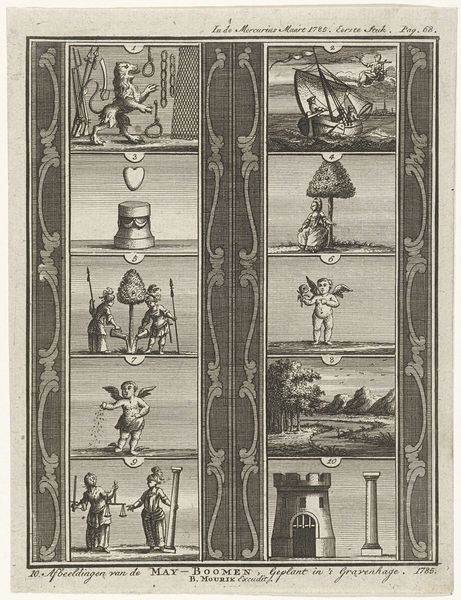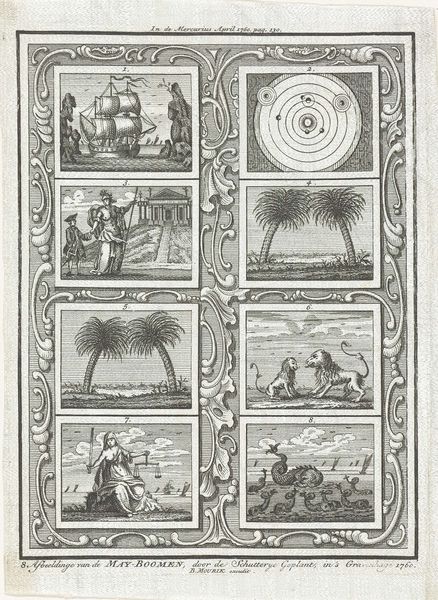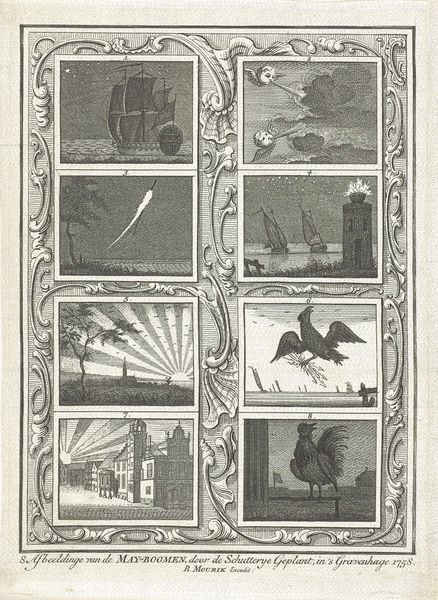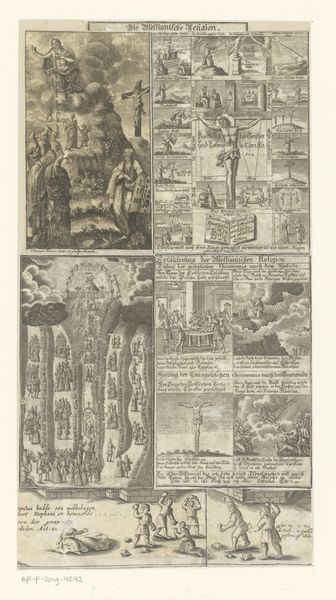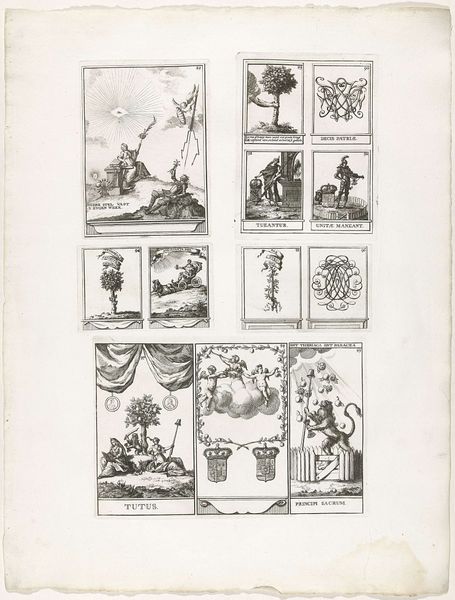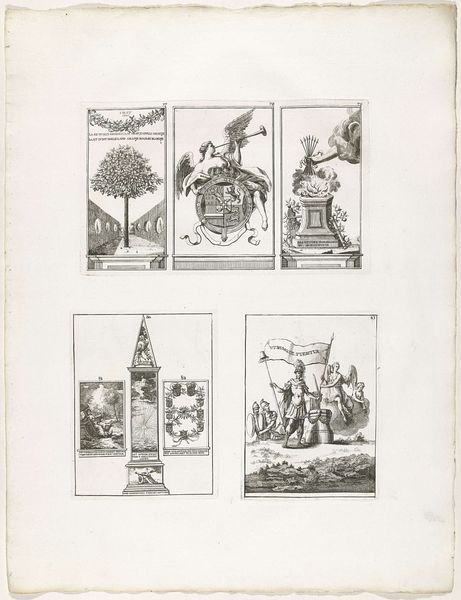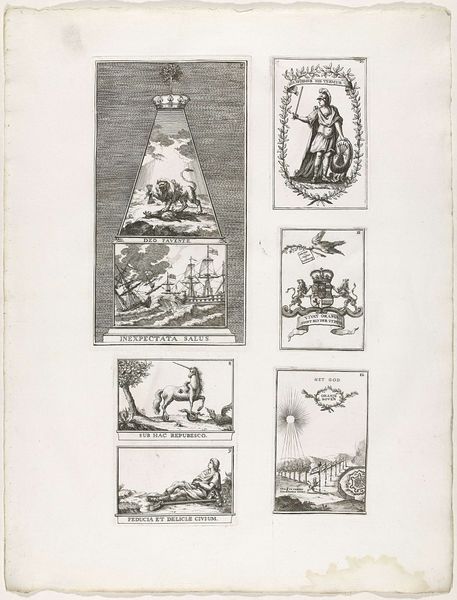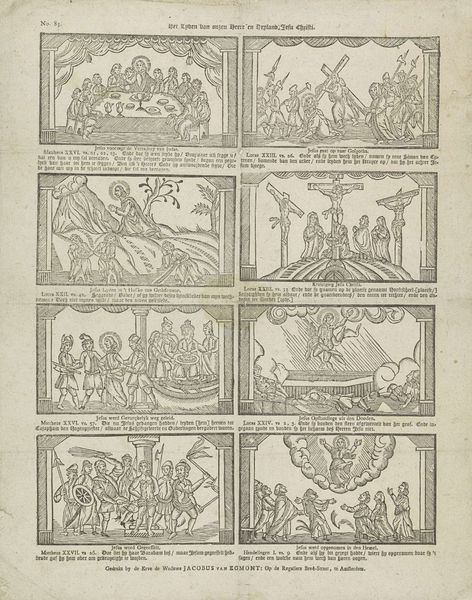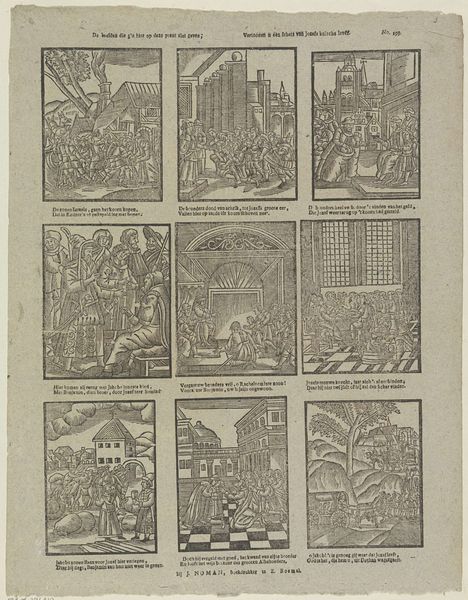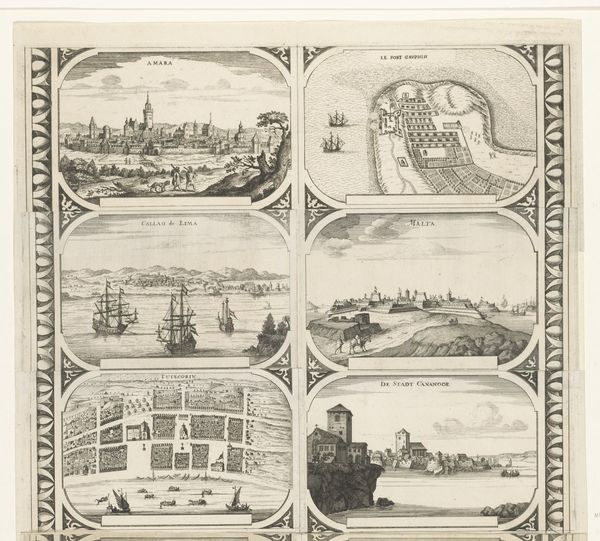
Dimensions: height 183 mm, width 142 mm
Copyright: Rijks Museum: Open Domain
Curator: This engraving, "Meiboom geplant door de Haagse Schutterij, 1762" by Caspar Jacobsz. Philips, is quite interesting. What strikes you about it? Editor: It's very detailed. It looks like it's depicting multiple scenes or stages of an event within one frame, almost like a storyboard. I'm curious, what kind of story is it trying to tell? Curator: Exactly! Consider the social context: It commemorates the planting of a May tree by the civic guard in The Hague in 1762. Planting May trees was a ritual with deep roots. But it went further than just a festival of renewal. Can you see it going beyond renewal, perhaps a symbol of civic pride? Editor: Well, seeing the ship and then a castle and these figures - what do the different scenes in each rectangle represent, in terms of the social dynamics and hierarchies of the time? Curator: Think of it as the civic guard literally planting the seeds of their societal role and power. The scenes—the ship symbolizing trade, the castle, perhaps governance, and figures in finery—represent aspects of society that the Schutterij aimed to protect. This image reinforces existing power structures while celebrating community. Where might social commentary or criticism appear, and whose voices might be absent here? Editor: So it's like a visual statement of their values and their role in maintaining order. But it feels idealized, doesn't it? It seems to ignore potential social inequalities of that time. Curator: Precisely. The 'genre-painting' and 'history-painting' labels point to the complex negotiation of presenting the Schutterij as both an everyday reality and a historical force, a narrative they wanted to solidify. This artwork really prompts us to think about what’s shown and more crucially, what remains unseen and unacknowledged. Editor: I never thought about prints as vehicles for propagating such social messaging. Now I’m seeing this image with completely new eyes. Curator: Indeed. Art isn't always about what's on the surface, but what lies beneath and who controls the narrative.
Comments
No comments
Be the first to comment and join the conversation on the ultimate creative platform.
